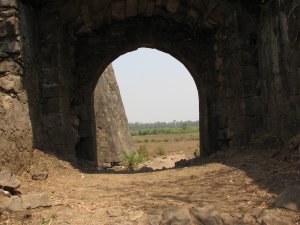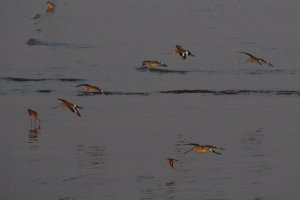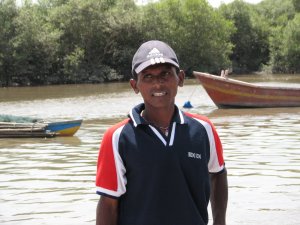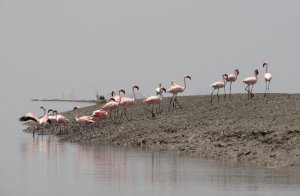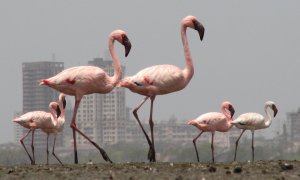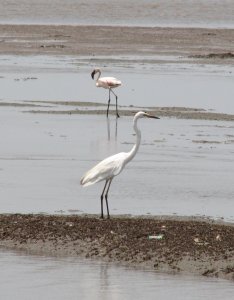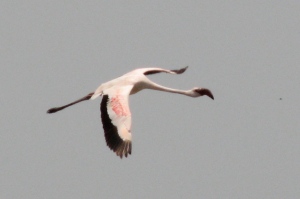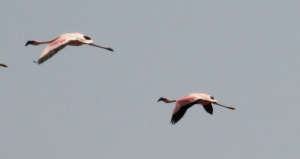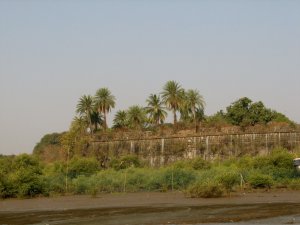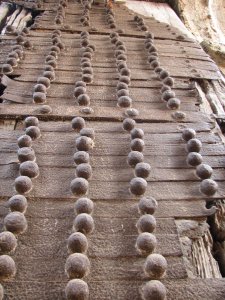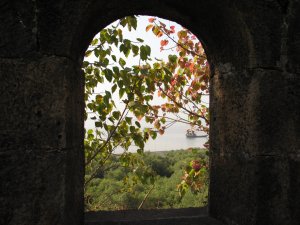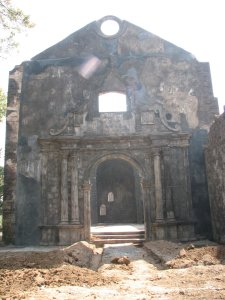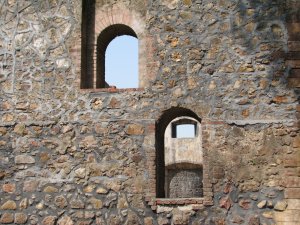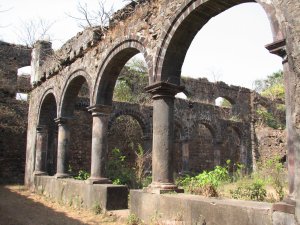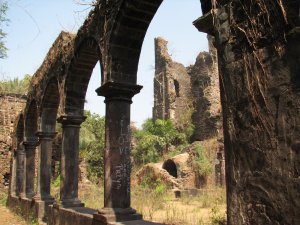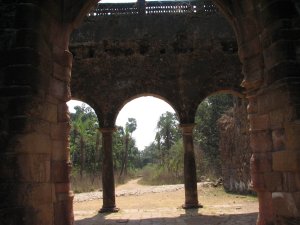Usually the graffiti on the walls of Mumbai are eyesores. But this one somewhere in Fort was a pleasure to see…

fort
Candy Shops for Bibliophiles 3
After the initial post on bibliophilia [here], and book shops in Nagpur [here] and Pune [here] we now come to the third in this series. The city of Mumbai [formerly known as Bombay] . There is too much to write about Mumbai, the way it was, it is and it will be in the future to come. Since it is my current location since about three years, and it is to be so for the coming few years, I have developed a special bond with the city. When I was in Pune, I had come quite a few times to Mumbai, with one of my friends who belonged here. It was during my visits in those years that I came to know about the Old/Used book markets in the city.
The first one which I will describe is in the heart of the Mumbai, The Fort area. Currently there is no Fort in this area, but there was in the early days of Nineteenth Century. The Fort has long gone since then, for making space for civilian and other buildings, and now only the name remains.
There are too many things in the small area which are of interest to me. I cannot maybe describe them all in this blog. Maybe, The Fort, needs a blog entirely for itself. But lets not divulge too much into it, as right now the thing that we are interested in are the Candy Shops for Bibliophiles. The Fort area presents the bibliophiles with a wide opportunity to shop, right from the old/used books to one of the quite old shops in Mumbai the Strand Books.
I recommend that you start from the CST [Chatrapati Shivaji Terminus formerly known as Victoria Terminus or VT] and take on the D N Road [Dadabhai Nowrojee Road]. Start walking from the Western end of the road, the end at which Mc Donalds is present. Almost right up to the Flora Fountain, one finds a sort of subway created by the arches of the buildings of Victorian architecture.
Along these corridors there are a lot of proper book stores. Some notable among them are the Computer Book Shop, Bookzone, Ashish Book Stores.
See the map below. Ashish Book Stores also have a annual exhibition in which you get lot of books at heavily discounted prices. Usually the book fair is at the Sunderbai Hall, near Churchgate.
On the other side of the road is the Sterling Book Stores, which will give you an enormous variety of technical books to get. They have substantial sections on Physics, Mathematics, Philosophy and Psychology. In most of these shops you will get about upto 10-15% discount on the list price.
Along the corridor you may find one or two old book sellers. One at very beginning and one may be in the middle of the passage. They were frequent a few years back. I got my copy of Albert Einstein : Philosopher and Scientist here in these shops. In fact a lot of old booksellers were present till a few years back, most of them now being removed, I guess in the anti-encroachment drive. But the walk through these ‘corridors’ is worth for the books that await you at the end of this walk.
You can drop by to the Khadi Bhavan, which is on the way to do some nice shopping. If you take a left turn at the Khadi Bhavan Chowk, it will lead you to Strand Booksellers. They have good collection of books on all subjects. You won’t find too technical books here, but books for general reading are more than abundant. Every year Strand people have the Strand Book Festival, which is a must visit. The book fair is usually during January end of February beginning, at the Sunderbai Hall, Near Churchgate. Huge discounts are on the offering in this mania of books. So make it a point to visit it!!

Now, if you go straight this will lead you to the American Express Building. Along side the walls of this building are the old book sellers. A few years back they were quite spread out, some of them had shops along the walls of the High Court building also. But now they have been contained in this small pocket here.
The sellers here are quite knowledgable about the books that they keep. They know the books by title and author. Some also make it a point to keep the books according to authors. The books most of the times are neatly classified by geners or subjets. They know almost all books by Arthur C Clarke and Carl Sagan. The more popular a book, more are the chances that you might find them here. But sometimes you get jewels here. I got my Why’s of a Philosophical Scrivener by Martin Gardner here.
The book sellers also have a library system, which means that after reading the book you can return the book and get some amount back. But who wants to depart with a book, especially if you are a bibliophile? The most common books that you will get here are the novels of all kinds. Bargaining can be done, and you can get books in quite cheap rates, especially if you are a regular.
The best time to visit is a late Sunday afternoon. When you can have all the time to browse through endless piles of books, to find what you are searching for.
One thing that you might miss on a Sunday is that many of the proper book shops mentioned above including Sterling and Strand, and the Khadi Bhandar are closed on Sundays. But the advantage to go on Sunday is a drastic reduction in the crowd that is present on the weekdays. So if you want to visit them all, the best day is a Saturday.

Till last year some sporadic old book shops were also present along the footpaths, of the Old Bombay University Building, the side on the opposite to FabIndia and Globus, near Kala Ghoda end. Here some of the sellers used to sell books for a cheap but fixed price. Some of lots would have Rs. 10/20/30 for a book. Sometimes I have found quite interesting titles here. But recently in a last few months I did not find these stalls. Maybe they were removed from there permanently. I have also found similar shops along walls of the Post and Telegraph Office. But they are not always there. If you are lucky you probably might get them.
While returning to CST do not forget to visit the Fort Book Distributors, opposite the main entrance to CST [Legend 2 in the map]. This is a unique proper book shop which also sells old/used books at quite cheap prices. They also have exhibition and sales of books at different places in Mumbai, so keep an eye out for them in the newspapers. My last visit to their FBD Book Fair was quite fruitful.
So much for the south part of Mumbai. In next post I will cover the Old Book sellers in the so called college district of Mumbai, the Matunga Area.
Till then happy book hunting!!
Update: As per comment of Square Peg below, I have not mentioned the New and Secondhand Book Shop. Yes! It is there from quite some time if I remember correctly since early days of last century and I did not know about it.
Only recently I came to know about it from < a href="www.arvindguptatoys.com/">Arvind Gupta. And I have not mentioned it. I was going to… but procrastination has its own strange ways in which it works…
So here it is :
The New and Second Hand Book Shop:
For this wonderful shop go to the Metro Cinema Square. There is a shop of musical instruments opposite Metro Cinema [well not exactly opposite, but across the street]. So when you keep your back towards Metro and are standing in front of this Music Store, start walking along the road towards right. After a few shops you have a lane going to left of the road. Just at this corner is the New and Second Hand Book shop. But beware the entrance is a bit small. Two times it happened that I went and saw that the shutters were down so just came back. Third time when I went there, I saw somebody coming out of what I thought was a closed shop. So this is where I discovered the entrance to the shop. They are open till 7 in the evening and closed on sundays.
Visiting the shop makes you feel as if you are visiting an old library. The shop has books lined up nicely according to subjects. The shelves have subject labels on them. Browsing through the shelves can, at times, become tedious. The section on social sciences is quite large. You get 30% discount on all the new books. For the old books the prices are mentioned on the cover and on that you get additional 30% discount. Most of the books are more than reasonably priced; they are cheap :). Also don’t forget to visit the second floor also.
So do visit this shop, till then happy book hunting…
[Map coming soon]
Flamingos!!
he bird species that we saw. Though not formally educated in Zoology his knowledge about the same was amazing.
Greater FlamingoField Characteristics: A long-necked rosy white stork-like bird, with a heavy pink bill, turned down at an angle from about half its length. Sexes alike. In flight outstretched legs and neck, and the black bordered brilliant scarlet wings are diagnostic.
Lesser FlamingoField Characteristics: Upper mandible not overlapping with lower. Bill dark colored with crimson feathers around its base. Plumage darker rose-pink than in the flamingo. Size smaller. Crimson and dark underwings, shorter trailing legs in flight diagnostic.
Vasai and Arnala
The Aim: To Do Vasai [Bassien] and Arnala Forts in one single trip.
The day finally came when the planned trip to Vasai fort had been finalised. This fort was long overdue. Maybe from last 4-5 years. Finally the party was decided. Finally the party was Mr. Jagdale and me. Sumit descended from Pune the night before and the rendezvous point was first decided at Dadar, but then changed to Bandra.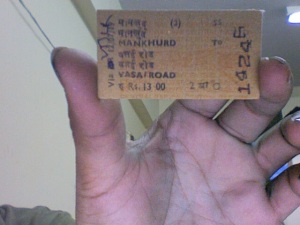
I woke up at 5:15 and woke up Sumit at 5:30 am. The scheduled meet was at 6:30 at Bandra Station. At about 5:50 I left HBC, since I had to get a ticket first, I had to miss two trains, and when I had the ticket, there was no train for next 15 minutes. Anyways reached Bandra at 6:45 via Vadala Road. Sumit wasn’t still there yet. So had to let go three more trains. When the last one was missed I guess we were the only two guys left on the platform. Anyways the next one was at 7:05 Virar fast. So we hopped up on that.
When the salt plains of Bhayendar could be seen we went to the gate. Early in the morning the coolness that you feel is really good. I wish the weather in Mumbai was the same throughout the day.
When we crossed the Bassien or Vasai creek a sense of freedom from the city of came. Anyways got down at Vasai Road at about 8:15. Then we checked into an Udipi hotel, had breakfast of the South Indian type.
We took an auto to Vasai Fort for Rs. 50 which we realised later was a larger payment than required. The drive through Vasai village gives you a feel of the country side. Along the road there was a market in which the locally produced [I guess] veggies were being sold. I had a desire to go and buy some, but considering the long day in front of us, decided against it. At the bus depot we took a left turn towards the fort. The fort became visible as we passed the Vasai police station. A part of the outer wall has been torn down to make the road, from where we currently enter the fort.
The fort has 10 bastions and is totally European in its architecture. The bastions are shaped like arrowheads, as opposed to rounded ones in India. The fort is strategically located to the North of Bassien creek. To the west there is marsh land. To east at present is the Vasai koliwada, to the south is the sea. To the north is the current city of Vasai . Out of the 10 bastions 9 were supposedly named as Cavallerio, Nossa Senhora dos Remedios, Reis Magos Santiago, Sam Gonçalo, Madre de Deos, and Sam Sebastião, Sam Sebastião.
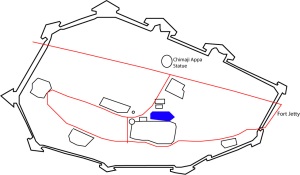
Compare this with the old Portuguese maps, which I found here.


A brief history of fort is available at Wikipedia entry on the same. Also I found this site very informative with some original images of the fort. The Fort was won by Marathas under Chimaji Appa in 1739, with much casualties, before that it was the Portuguese capital of North Konkan. When in its full glory the Vasai fort must have been wonderful. Even the ruins of the fort are magnificent. You get a feeling of being transformed into their era when you are in them.
The auto took us to the fort jetty by a straight road which goes through the fort. The jetty is at the southern end of the fort. From the jetty there is a gate to enter the fort. This is one of the original entrances to the fort, and was known as Porta do Mor. The other gate is on the land side of the fort and appropriately called Porta da Terra [This one we could not see, as we did not know that it existed, when we went to the fort]. There are two baobab trees at the entrance. The baobab trees are native of Africa, were supposedly introduced by the Portuguese in the area. Actually Sunjoy Monga’s book Mumbai Nature Guide lists Vasai fort as one of the sites which harbors the baobab trees in the vicinity of Mumbai, about 6 specimens are listed, out of which we could see 5. We missed a really large one which is at the right to the sea side entrance of the fort. The species that we have here is Adansonia digitata [known as गोरख चिंच [gorakh chinch] locally]. For interesting information see www.baobab.com
One interesting thing to note is that there still is a full wooden door, with all its ornamentation. I doubt it is the original one but it was a pleasant surprise nonetheless. As you enter the fort from this side there is a small temple on the left hand side, which was established by Chimaji Appa, when the fort was won.
The inner gate also has its wooden door intact.
We went up the stairs that are behind the small temple, which is one of the ten bastions of the fort [Though at that time we did not know that is was a bastion]. There were trees growing on the bastion floor!
The windows of the bastion overlook the Bassien creek and give a nice view of the mangroves below and the fishing ships beyond.

Sumit in one of th
e windows.
On the bastion a vine with yellow flowers was in full bloom. Ritesh the best taxonomer I know was not able to identify it [Id anybody?]. The plant was identified by Samir as Yellow Trumpet Creeper Macfadyena unguis-cati, also called Cat’s Claw. See the comment.
Then we went on to a cathedral. Deja-vu!! Simply because this location has been used in a lot of movies and also videos. Anyways the ceiling of one part of the cathedral is still intact. Though it has lost its lustre it must have been really magnificent.

This was our first major halt in the fort. The cathedral also has spiral staircase, which is very unique in construction. The steps and the axis are carved out in a single stone. See the picture and you will probably understand. Here again the bane of Indian archaeological sites viz. graffiti is abound. Some people are trying to make themselves known to the world at the cost of damaging and ruining our cultural heritage. Yuck!! I don’t know with what mentality people do this, are they trying to claim the place for themselves? Shame on them.
 The Portuguese coat-of-arms on the gate.
The Portuguese coat-of-arms on the gate.
Here you can see two non-pillars; see the photo and you will understand.
 There were fisher folks in the fort trying to process their webs with some sort of dye. Inside the citadel there is a small pond, which had some herons in it. We went along the wall to the end of it near a bastion. This bastion is circular though. When we went out of the citadel, we came up to the senate house of the fort. Next to the senate house is the lake which is almost at the center of the fort. Along side the lake are two temples, one of Vajreshwari and Nageshwar.
There were fisher folks in the fort trying to process their webs with some sort of dye. Inside the citadel there is a small pond, which had some herons in it. We went along the wall to the end of it near a bastion. This bastion is circular though. When we went out of the citadel, we came up to the senate house of the fort. Next to the senate house is the lake which is almost at the center of the fort. Along side the lake are two temples, one of Vajreshwari and Nageshwar. A stone plate with something in roman script [Can anyone translate this?].
 From here we went inside towards the unknown, there were people sitting we asked them about more places to visit. They said that one of the old churches has been restored recently and that we should see it. They were the guardians of the mangoes of the fort. We went by the way told by the guardians and landed up at another place, which Wikimapia says is the Old Convent of St. Anthony.
From here we went inside towards the unknown, there were people sitting we asked them about more places to visit. They said that one of the old churches has been restored recently and that we should see it. They were the guardians of the mangoes of the fort. We went by the way told by the guardians and landed up at another place, which Wikimapia says is the Old Convent of St. Anthony.
Arches are numerous as can be seen from the photos below.
One of the features of this place is the fact that the floor here has many graves. Some of them have coat of arms inscribed on them and some have names and the year of the burial all in roman script.


Then after this we went to the restored Augustinian Convent. Most of the restoration is of concrete :(.
 Some initials which I would like to decipher. The date inscribed is 1626.
Some initials which I would like to decipher. The date inscribed is 1626.
From here on we hit back to the citadel where we came from. After pas
sing the Nageshwar temple we came to the ruins of the Dominican convent. This is another place undergoing restoration. Lots of re-construction going on. This was also a hospital.

 Is not the statue missing?
Is not the statue missing?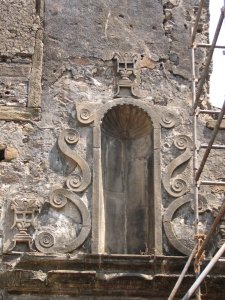 The coat of arms here too…
The coat of arms here too…
There was I guess a bell tower also here. From there we get to the main straight road which goes to the fort jetty. And across the road is the statue of the Chimaji Appa who captured the fort in 1739 from the Portuguese.
When the fort did not yield quickly Chimaji Appa said:

 The view of the bastions from the ground level, as they would have appeared to the attackers.
The view of the bastions from the ground level, as they would have appeared to the attackers.
